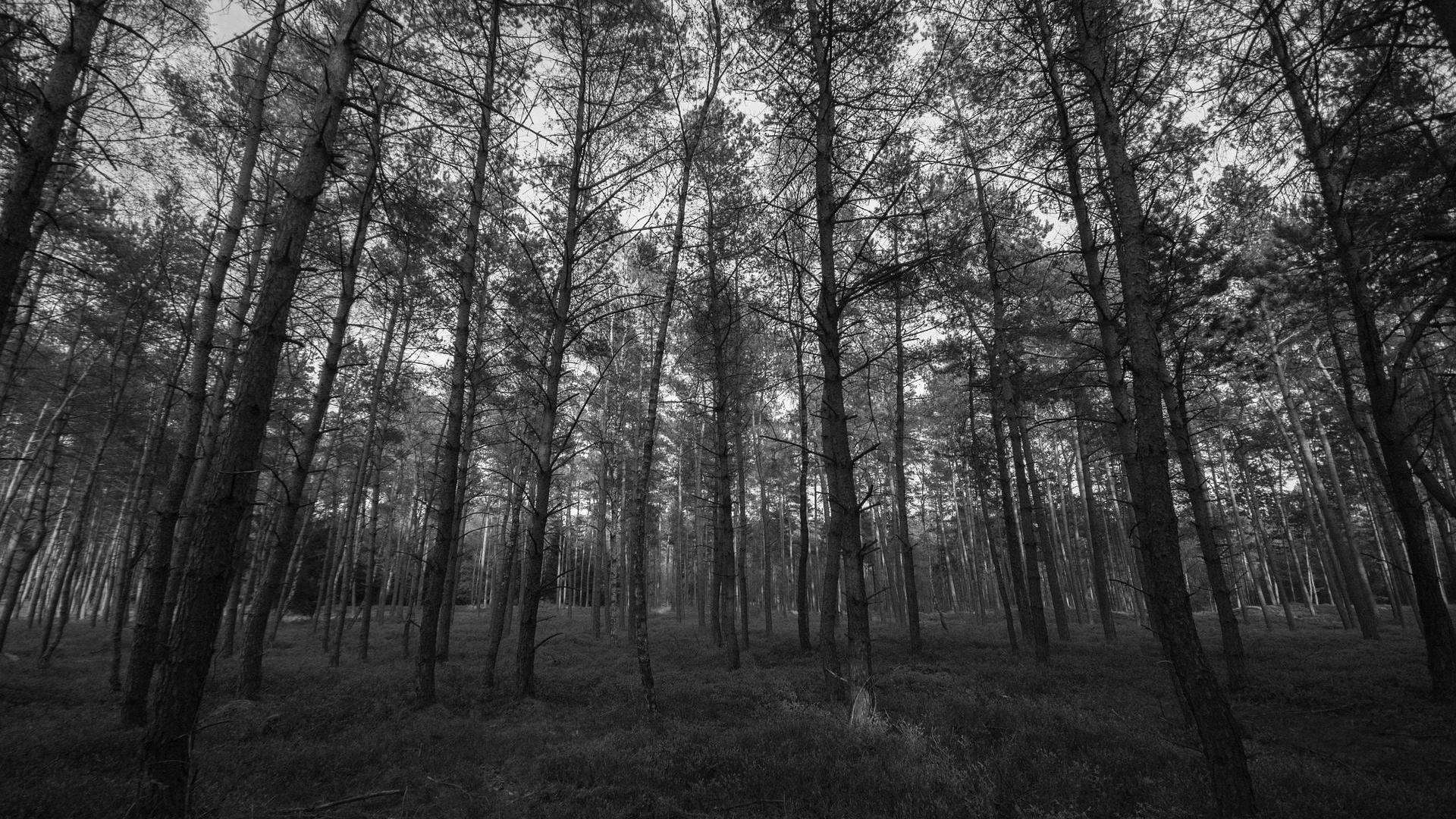Final Project_The Octocat
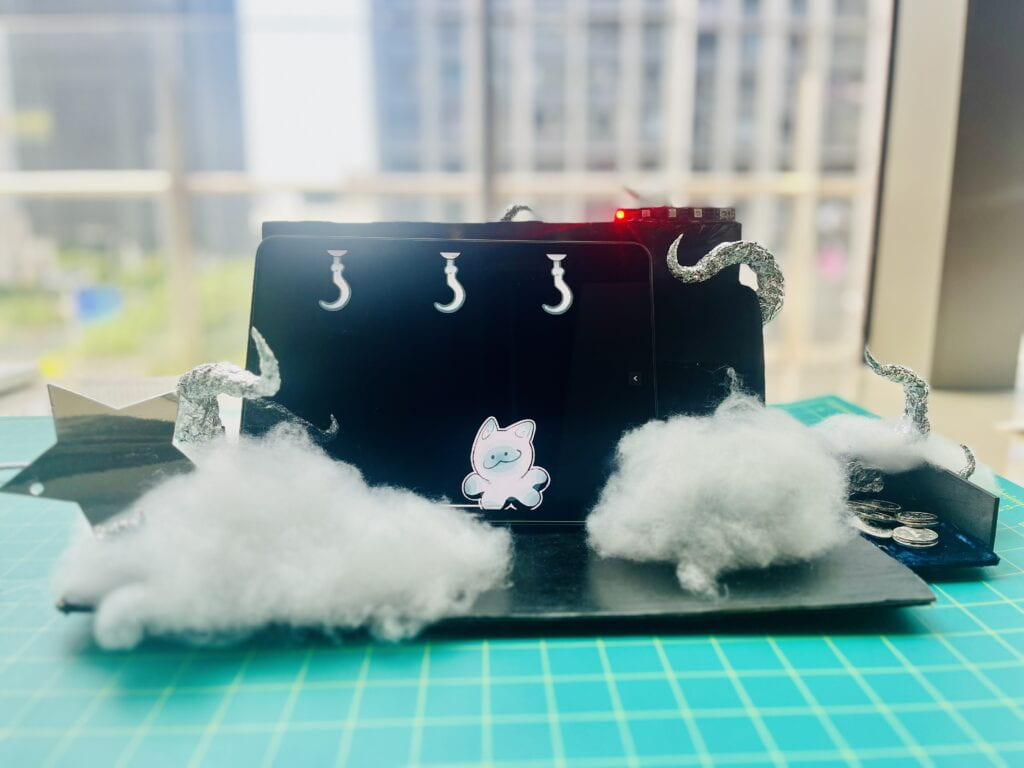
Through extensive research into arcade gaming trends and player preferences, my project uncovered a gap in the market for an engaging fishing game experience with a whimsical twist. Inspired by the popularity of traditional fishing games and the coin pusher, I chose to reimagine the concept by featuring an octocat as the primary catch. By combining elements of classic arcade gameplay with interacting mechanics, my game aims to create an immersive experience that both entertains and delights players of all ages, with the interesting combination of machines and codes.
To achieve this, I am focusing on a few key design elements:
1. Visual Appeal: The vibrant colors and playful animations of the octocat and are designed to captivate players’ attention. Together with the outer decorations like tentacles and cloud, I aimed to create a fairy scenery.
2. Engaging Gameplay: The intuitive controls and responsive gameplay mechanics make it easy for players of all ages to enjoy the fishing experience, creating a sense of accomplishment with each successful catch. By simply insert a coin the players can know how the game works, instead of having too much buttons or rockers that may confuse them. And with each successful catch there will be an exciting cute sound effect playing, which extends the sence of accomplishment.
3. Reward System: Implementing a rewarding system, such as getting all your coins back if you win, keeps players engaged and motivated to continue playing, ensuring a fulfilling experience. On the other hand, the punishment of losing the game – lose all your coins also does the same thing.
Here’s a video demonstrating how this works:https://drive.google.com/file/d/1lDY27V8KQteq-5kGcI3w-hzwgHx84BgB/view?usp=drivesdk
When built it, I made some sketches to help me understand how I can cut and combine different pieces. However, after I decided the final design and did the laser cutting, I found that there’re still lots of problems that I didn’t think of. For example, if I place the light sensor too low (deep) it will not be able to detective the coin due to coin’s high speed (caused by acceleration), however, if place it too high it will be so easy to be infected by the change of outer lighting conditions. As a result, I have to try and adjust it many times till I found the best place.
Some sketches I have:
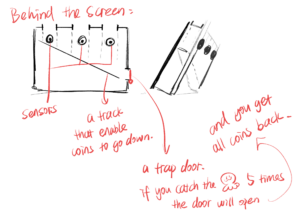
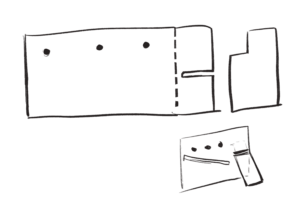
I use light sensors because it’s very sensitive, can perfectly meet my demands. In order to reduce the influence by outer light conditions, I placed some LED lights in front of them.
Besides that, in my original design, instead of CATCH the octocat I thought of HIT the octocat (with a net or a fireball or something). However, in the user test session, I received some advice that players wish they can GRAB the octocat like in a claw machine. So I decided to change the net into a fish hook. Consequently, this change had brought me much more coding (I have to make the hook go backwards after hit the octocat but can still go down when insert another coin) but also better visually appealing. However, frankly speaking, because the coding part is actually hard for me (the coding logic drive me mad), instead of the hook taking up the whole octocat I make it only taking up its soul, so I don’t have to worry how to make the octocat disappear and appear again.
The original design versus final result:
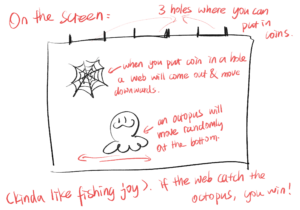
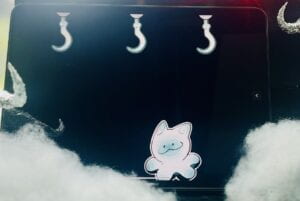
Reflecting on the project’s outcome, it can be said that while the initial goals were met to a certain extent, there were areas where further refinement and improvement could have enhanced the overall experience. The project did succeed in creating a visually appealing and engaging gameplay experience, as evidenced by the positive reactions from the audience during the demonstration.
Interactions with the project were largely positive, with players expressing enjoyment and excitement while playing the game. The intuitive controls and rewarding system effectively engaged the audience, aligning well with the project’s definition of interaction as meaningful engagement and enjoyment.
However, setbacks and challenges were encountered during the development process, particularly in fine-tuning the mechanics such as the placement of light sensors. These obstacles provided valuable learning experiences, highlighting the importance of thorough testing and iteration in the design process.
Moving forward, if more time were available, further improvements could be made to enhance the accuracy and reliability of the coin detection system, as well as exploring additional features to deepen the gameplay experience.
In conclusion, while the project achieved its primary goals of creating an engaging fishing game experience with a whimsical twist, there is always room for improvement and refinement. Through setbacks and failures, valuable lessons were learned, contributing to personal growth and development as a designer. Ultimately, the project represents a step forward in the journey of creating immersive and enjoyable arcade experiences, with the potential for further innovation and exploration in the future.
Disassembly (I need my cotton back!): https://drive.google.com/file/d/1QQFRBLb1HT_pFpLEqRpxWIg162jCB4Mz/view?usp=drivesdk
Codes: https://docs.google.com/document/d/1fw94-4ew_numw2q5_M42KMpbRKl5Or4tzQgFDIVhQwA/edit?usp=sharing
